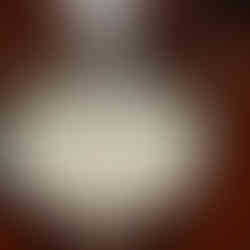HANDMADE LAUNDRY SOAP
- Gavrilev
- May 25, 2018
- 4 min read

One of the easiest soaps to make is this super simple coconut oil laundry soap. I highly recommend starting out with making this soap as the chances of anything going wrong are very low and the steps are few, easy and brief.
Before you start working on this tutorial, please be reminded that it only tackles the specifics of making the soap and does not include any special notes, ingredient and terminology explanations, equipment list etc. so it is imperative that you review the detailed information on the basics of soap making from the NATURAL SOAP MAKING 101
Making and using this soap will come in so handy for everyday household chores. I use this soap universally for my laundry and dishwashing, as well as for making other cleaning product (i.e.counter or bathroom cleaners etc.)
A big shout out to mommypotamus for helping me get started on my path of self-sufficiency years ago. You will find that this recipe is actually Heather's (aka Mommypotamus) but I've been also making it for years now and the tutorial, photos and explanations are my own. You can also check out her original tutorial here.
Let's not stretch the bla-bla too much and get to work.

This is the recipe that we will be working with. I cover recipe formulation in the Soap Making 101 tutorial and I encourage you to try and enter the details of this recipe yourself in the calculator in order to gain some practice.
What will be special about this soap is that we will keep the superfat percentage very low (just 2 %) in order to maximise the cleaning properties of the soap needed for heavy duty laundry washing and de-greasing dishes.
Coconut oil makes a hard bar of soap, as you can also see from the soap bar quality numbers and you will also shortly experience it for yourself.
Now, let's get cooking!

Weigh your caustic soda and water in separate containers on the digital scale.Put your caustic soda container away immediately.
In a well ventilated area add the caustic soda crystals to your liquid and stir with a silicone spatula or steel spoon continuously until all the crystals have dissolved in the liquid.Be prepared for the sudden increase in temperature (the solution can reach close to boiling point within couple minutes) and the fumes. Wear a mask if needed. Set the solution aside to cool (I prefer it to reach a temperature of around 35 C).If you plan on leaving your work station make sure to clearly label your caustic solution and preferably place it out of reach of children and pets.

In the meantime, in a steel pot or saucepan, accurately measure your coconut oil on the digital scale by using the tare feature to bring the display to "0" after placing the pot on it.
Make sure your pot is large enough to comfortably hold the lye (which we will pour over the oil) as well as the oil itself and have plenty of extra room for when the soap mixture agitates during blending.

When your lye has cooled down to the desired temperature then you will also gently heat the coconut oil to a similar temperature.
Keep an attentive eye on the thermometer(making sure it doesn't touch the bottom of the pot) because 35 C is a low temperature and oils heat up very quickly.
FUN FACT Coincidentally, as I'm making this tutorial the temperature in my kitchen is 35 C so I didn't have to heat the oil.
Next, pour the lye solution in the pot with the coconut oil. You will instantly notice the oil at the bottom of the pot go cloudy. This is the start of the saponification process. How exciting!

Gently stir with a rubber spatula for about a minute and then immerse the the handheld blender head in the liquid. Start pulsing for short time spams and move the blender head to stir the soap between pulses.

As the soap mixture starts to homogenise and thicken gradually increase the length of time that you run the blender.
Blend with intermittent breaks until you reach trace.
If it were any other soap, at this stage I would add the additional ingredients (clays, colouring, moisturising ingredients etc.) but I don't add any to my laundry soap.

Pour into the prepared mold.
Cover the soap mold with a cardboard sheet or plywood and wrap in a blanket to keep the heat of the soap for as long as possible.
This step is not absolutely necessary but it will aid the curing process and give the finished soap bar a more gel like texture as opposed to a matte texture when omitting this step.
This soap will set very quickly and will be ready to unmold and cut the next day.
Place your soap bars on a shelf lined with brown/butter or tissue paper in a well ventilated room. Allow the bars to cure for at least 4 weeks; keep turning them regularly to expose all sides to air.
























Comments